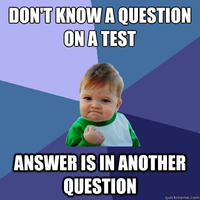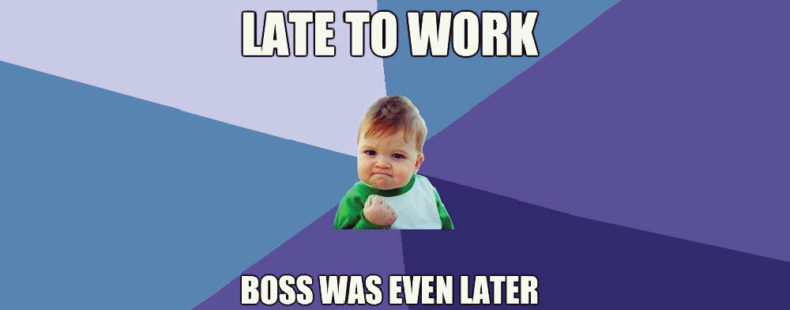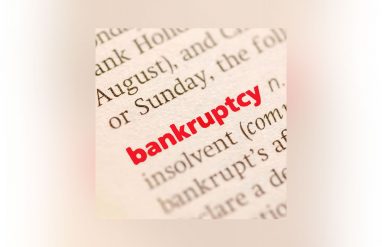LOLcats. Good Guy Greg. Forever Alone Rage Face. Scumbag Steve.
If you recognize that these are internet memes, you’re not oblivious to the raging cultural phenomenon that has swept internet screens in the last several years.
So, what does meme mean?
For the uninitiated, an internet meme is any concept expressed through digital media that goes viral—a photo, video, GIF, song, doodle, fictional character, symbol. The list is endless. Social media sites like Reddit, 4chan, Twitter, Tumblr, and Facebook endlessly cycle iterations of memes, which is why the media form stays relevant and popular.
Meme-generation is an individualized social activity: Original Posters (OPs) create a meme and if enough people in a community find it to be funny and relevant, other users either share it “as is” or will “remix” it by appropriating the meme, tweaking it with personal flair, and releasing it back into the wild.
Popular memes are categorized into genres, each of which operate using certain conventions. Genres speak to different themes, but they’re all usually related to poking fun at human behavior, like pointing out socially awkward moments, celebrating pitiful achievements, or blowing first-world problems out of proportion. And, pop culture “memery” is elevated to a science on the website KnowYourMeme.com, a veritable Willy Wonka Chocolate Factory of memes, their origins, and how to use them. Hey, we give props where props are due.
Knock-knock jokes are a great example of pre-internet memes that achieved virality. Like memes, there’s a clear message behind them. They also change and evolve as tellers tell them (there are innumerable variations in the world). They have an established structure that provides a framework for the joke (“Knock knock, who’s there”). And, knock-knock jokes are known to pretty much everyone.
How do you read a meme?
Memes may not be “high culture,” but they still demand a level of competency to understand how to read and produce them. It takes an insider’s knowledge. Just like the inside-joke that your grandma doesn’t get (but pretends to and laughs anyway), reading a meme correctly requires knowledge of the social and linguistic contexts that gave it rise.
Internet Memesters are a diverse group—some coach the neophytes, some belittle them. And, it’s the latter reaction that can turn a joke sour. A little frustration is understandable; when the conventions aren’t followed, when memes are misused by your boss, your yoga teacher, or the guy on the train who’s shoulder you’re looking over, the punchline may be ruined to some. Having to explain a joke renders the joke un-funny. We get it. But, a little compassion for those new to this art form can also go a long way. Unless a meme is misused in a harmful way . . . .
How can memes “go wrong”?
Comparing memes to inside-jokes is helpful because it showcases the idea that memes are 1) usually funny and 2) achieve their humor for the in-group because they’re created using conventions that the in-group is . . . well, in on. But, the flip side is multi-fold: conventions can be thwarted for negative purposes, humor is achieved at someone else’s expense (which can get nasty in memes), and the very existence of in-group/out-group distinctions implies a hierarchy. If you’re not part of the in-group, you don’t know the conventions and thus don’t get the joke. That’s frustrating. But, it’s downright offensive if you identify with a group that’s become the butt of the joke in a meme.
This means there are endless ways memes can “go wrong.” From a structural level, if you don’t know the formulas, formats, discourses, lexicon, social/cultural contexts, and layers of narrative behind a meme, you’ll misuse it. Sometimes, misusing a meme is not the end of the world. Other times, memes are appropriated for dark and deeply offensive intentions. Unfortunately, like knock-knock jokes, this is nothing new.
What is the formula for a successful meme?
Countless memes rely on following visual and textual guidelines. Take Success Kid (part of the Advice Animal genre of memes). Success Kid features what Memesters interpret as a baby’s self-satisfied face often centered on a blue geometric background. Standard in meme culture, a message written in black-outlined white Impact font should appear above and below the image. Meme-literate people know this, and they also know the blueprint formula for structuring the Success Kid message:
Top: Describe a situation + [Success Kid in the middle ] + Bottom: Tell something about how the situation went better than expected = successful Success Kid meme



And yet, the well-meaning who are new to the Land of Meme just don’t know the formula. They might think Success Kid is more like Beat You Up Kid, misinterpreting the smug-face of success as a scowl of menace, the fist as a threat rather than a fist-pump of celebration. 
These memes don’t follow the rules and, to the gatekeepers of the Land of Meme, they may even be “terrible.” However, these types of memes gone wrong are pretty harmless overall.
How do you deal with harmful memes gone wrong?
The problem is, of course, that in the public sphere, anything is possible and people with divergent intentions feel just as entitled to remix memes as they see fit. Sometimes, this waters down the potency of more thoughtful or politically-poignant memes (that’s right, not all memes are funny). Other times, originally innocent and fun images are transformed to perpetuate racist, hateful ideologies.
Pepper Spray Cop is one example of how the never-ending quest for entertainment in pop culture can infiltrate a meme meant to be provocative at a deeper level than “OMG so funny [retweet].” The Pepper Spray Cop is a photoshop meme based on a photo of a police officer pepper spraying a group of seated Occupy protesters at the University of California, Davis in 2011.

One of the original posters of the meme superimposed the cop on a background of the 1819 painting Declaration of Independence by John Trumbull. The message: The cop’s actions went against foundational US principles. The students were exercising their right to peaceful protest, and the officer unjustifiably assailed them with chemicals. The poster created a meme to convey how wrong this was.

Other remixes of the meme placed the cop in quintessentially American paintings and locations: Andrew Wyeth and Norman Rockwell paintings, a copy of the Constitution, Mount Rushmore. The stark juxtaposition of beautiful American symbols disrespected by the cop is what made the meme so poignant.


Of course, to understand these meme variations you need to understand the original Occupy protest situation. Otherwise, the viewer might think that the re-posters were, themselves, disrespecting American art or the Constitution. So, of course, this misunderstanding did come to exist and it led some people
to put the officer in situations where he accosted annoying pop-culture characters and ideas (according to the re-posters) with spray.


For the community of Memesters ITK (“in the know”), the lack of background knowledge about the original meme dripped superficiality. And, by having the cop spray silly annoyances, the tone of the entire message was reversed from one of harsh criticism to validation of the cop’s behavior (“Black Friday shoppers are so annoying, go get ‘em!”).
Meme-sharing is a collaborative, creative experience. But, as with learning any language, there are degrees of fluency that will undeniably index who knows what in meme culture. As we’ve seen, memes can “go wrong” in a number of ways, some harmless, some not so much. For those who aren’t meme-literate yet (like Grandma), a little friendly coaching is helpful. For those who are meme-meanies, speak out! Hatefulness is never okay.
Social media memes thrive—survive—by giving everyone a voice. Everyone. So, if we want to participate in the meme orchestra, not only do we need to learn how to read the music and play our instruments, we must accept the fact that we’ll hear a cacophony of both beautiful melodies and horrible out-of-tune noise. That doesn’t mean we accept that noise, though.














